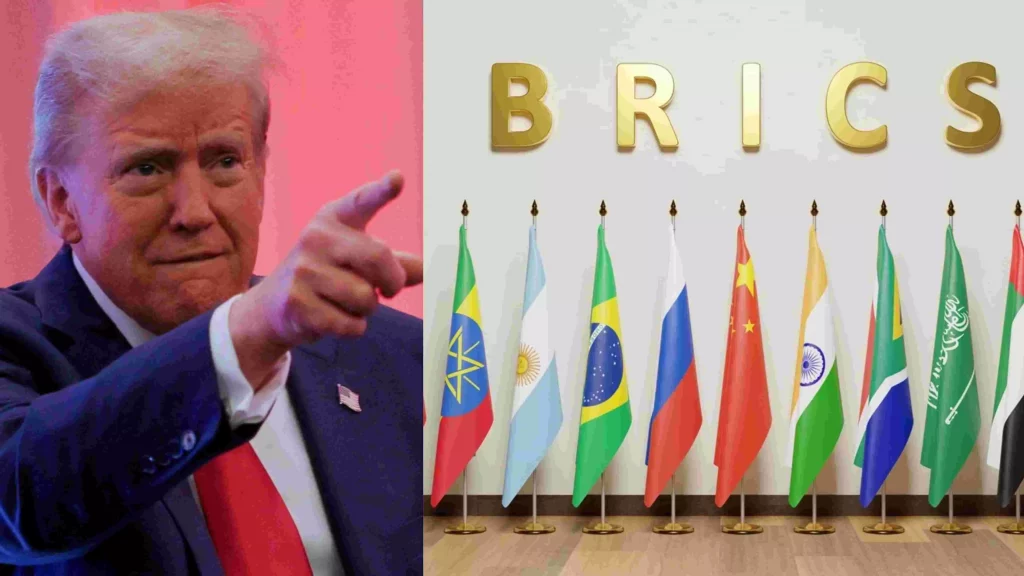US President Donald Trump is opening new theatres of his global tariff war. This appears to be a strategy he is determined to adopt even as his trade war is forcing some of the US-friendly countries to join hands with those with which they do not see eye to eye on many issues.
Trump betrays his increasing impatience by making the BRICS group of emerging major economies a new target of his tariff war. He has threatened members of the group, which include China and India, with 10 per cent tariffs on goods exported to the US in addition to heightened tariffs already on the horizon for some of them. As leaders of the group met for an annual summit in Rio de Janeiro recently, Trump thundered, threatening on social media “any country aligning themselves with the anti-American policies of BRICS” will face those duties with “no exceptions.” He then followed it up with the assertion that he intended to break up the group.
In a sense, the new development demonstrates how the US under Trump is concerned by the fact that BRICS is growing from strength to strength, expanding its membership to include Egypt, Ethiopia, Indonesia, Iran and the United Arab Emirates, while more countries are waiting in the wings for entry. It also puts the international spotlight on the group, which roughly serves as the Global South’s answer to the US-led G7 advanced economies. It is also true that the BRICS member states are too politically and ideologically disparate to be effective. That gives rise to the question why Trump is so concerned about it. The answer seems to be his worry that BRICS may pose a grave threat to the dominance of the dollar in the world economy and the accumulation of wealth in the USA. What he said during his cabinet meeting soon after the BRICS session points to this direction: “BRICS was set up to hurt us, degenerate our dollar and take it off as the standard.”
In fact, the ambitious goal of a “BRICS currency” had first been suggested by Brazil’s President Luiz Inácio Lula da Silva in 2023, but the idea was shelved as it appeared to be too complex and practically impossible. While most other nations supported Brazil’s idea, it was India that opposed the push for a unified currency simply due to political considerations and not economic. However, BRICS countries are keen on expanding trade in their national currencies, rather than relying on the US dollar. The aim is to reduce the dollar dependence of a significant chunk of the global economy. BRICS members account for more than a third of global GDP based on purchasing power parity. Interestingly, in a joint declaration released during their Brazil summit, the group of BRICS leaders endorsed ongoing discussions of a “cross-border payments initiative” between member countries. If such a system is developed, analysts suggest, it could potentially become an alternative to the SWIFT inter-bank network, using BRICS countries’ currencies or their digital equivalents.
Bypassing SWIFT and a dollar-denominated trade system has obvious benefits for certain BRICS countries, such as Russia and Iran, as it could allow them to wriggle out of heavy Western sanctions. Other countries also see a benefit in not relying on the US dollar for trade. For example, China has long been aiming to make its renminbi an international currency and counter what it calls the US’ “financial hegemony.”
There are conflicting interests in the BRICS group that make united economic actions a very difficult task. But, what appeared to be too complex even a few months back, now becomes feasible for the simple reason that Trump is resolved to reset the global economic order dismantling the previous system. His belligerence in asserting America’s economic power is ironically bringing together other countries in the Global South so that they can work against the might of the US and precisely negating his intentions.
